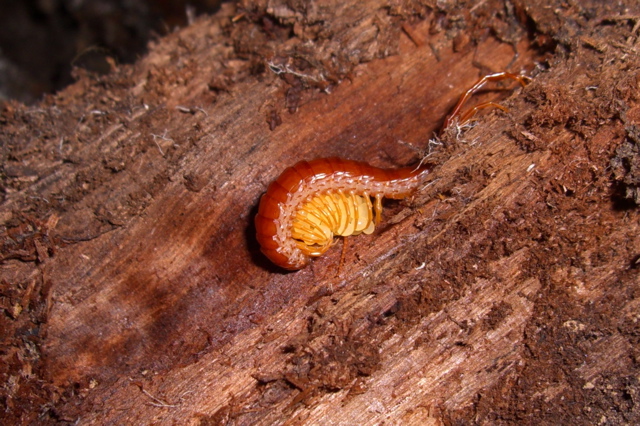Megarian Banded Centipede
(Scolopendra cingulata)
Reproduction (Antisocial Sex)
The Scolopendra cingulata life cycle is advanced and complex. To begin the life cycle the male S. cingulata will produce a spermatophore, a capsule of mass containing spermatozoa, and deposit it in a location for a female S. cingulata to ingest. The female then stores in her spermathacae. The weight of the female positively correlates with the number of eggs she is carrying, which can range from ten to fifty eggs. After she releases her eggs the female S. cingulata also releases the previously ingested spermatophore onto the eggs, thus fertilizing them. The female will then coil herself around her eggs in an attempt to protect them and increase survivability (Radl, 1990). This behavior is known as brood care. This brood care continues throughout all three larval stages and is seen in other members of Scolopendra, such as in Scolopendra gigantea.
The brood care of S. cingulata not only includes development of eggs in the first embryonic stage but also the following three larval stages. During the first stage the larvae remain motionless in a curve shaped position and shed their chorion. Once in the second larval stage the S. cingulata larvae can move around and between the legs of their mother but cannot feed yet. Finally, once the third larval stage is reached the larvae are capable of feeding and shortly after brood care is ceased and the female leaves her offspring to fend for themselves. Brood care typically lasts around fifty days (Radl,1990). If the mother is disturbed by outside forces during brood care multiple outcomes are possible. The first reaction to disturbance of brood care is to abandon their offspring. The second, more extreme reaction the S. cingulata mother will exhibit is that she will eat the eggs or larvae when disturbed (Lewis, 1981).
Once abandoned S. cingulata infants will continue to develop by molting. The shedding of the exoskeleton, formally known as ecydysis, is synapamorphy of the Phylum Arthropoda. Members of Scolopendra live relatively long compared to many other insects, possiby living five to six years! Scolopendra cingulata is a solitary organism that rarely interacts with other members of its species, even seldomly participating in cannibalism!
Andre McMillion and Jaelen Yach of the University of Wisconsin - La Crosse. Bio 203 - Spring 2014
